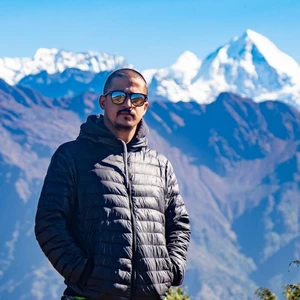Holi, the festival of colors, is one of the widely celebrated festivals in Nepal by people of all ages and backgrounds. It is celebrated in the month of Falgun under the Nepali calendar which falls in February or March. It marks the arrival of Spring and the end of winter in this part of the world. People celebrate the holiday by smearing colors over each other, throwing water balloons, engaging in songs and dances, and more.
On the eve of Holi, people light a bonfire, known as Holika Dahan, as a celebration of the triumph of good over evil. It is usually associated with the coming together of the people of the community where they pray, sing, and dance. People also organize close parties and gatherings, however, the true fun of this day lies in the community-level celebrations.
Mythical Importance:
Holi is a festival of great importance in Hindu mythology and is associated with several stories and legends.
The most famous story that goes along with Holi is the one with Holika and Prahlad.
Prahlad was the son of King Hiranyakashipu, who received the boon of invincibility from Lord Vishnu. The king felt above the gods and demanded people pray to him but Prahlad refused. Hiranyakashipu tried several times to kill Prahlad but was miraculously saved by Lord Vishnu. Finally, he asked his sister Holika to sit with Prahlad on fire in order to kill him. Holika, who was supposed to be immune to fire burnt instead, and Prahlad was saved.
According to legends, Hiranyakashipu couldn’t be killed by any man or animal, day or night, neither outside nor inside, and neither on land, air, or water. He was killed by Lord Vishnu who donned the Avatar of Narasimha - half-man and half-lion during the evening at the door while seated on the lap of Narasimha.
In another story, Lord Krishna, who was dark-skinned was envious of Radha and playfully smeared her face with colors. This started the tradition of playing with colors during Holi. The festival is celebrated by many as the symbol of undying love between Radha and Krishna.
In another story, Holi is celebrated for Lord Shiva resurrecting Lord Kamadeva after he incinerated him with his third eye.
Cultural Importance:
Across the Indian subcontinent, this festival has been celebrated for thousands of years. The festival has been mentioned in many ancient Hindu sacred texts. It is celebrated as a harvest festival by some communities as it marks the end of autumn and the start of spring. People give thanks for a bountiful harvest and pray for good crops.
The festival is a symbol of unity and harmony as it brings people from all walks of life together regardless of their backgrounds. It is a day when people forget about their social, economic, and cultural backgrounds and come together to have fun. It is believed that the tradition of using colors during Holi came from the Mughal empire, a dynasty of Muslim rulers.
Celebration of Holi in Nepal
The festival of Holi is celebrated with great enthusiasm in Nepal, especially in the Terai region and in the city areas.
In Kathmandu, the hotspot is Basantapur (Kathmandu Durbar Square) where thousands gather to enjoy this amazing festivity. The celebration begins with the installation of “Chir,” a bamboo pole covered with strips of clothes. It is said that Holi used to be celebrated for a week, from the day of the installation of Chir to the full moon day that follows. However, it is celebrated only on the day of the full moon now.
Thousands of mostly young people flock to Basantapur to celebrate the colorful festival that will last all day. People start pouring up at Durbar Square early in the morning. In recent times, people have been seen to paint faces as a part of the celebration. The event also attracts a lot of foreigners as the spot is close to the tourist capital, Thamel.
In Pokhara, people gather around the shore of Phewa lake. Youths from the city of Pokhara and tourists celebrate the Holi on the streets of the lakeside enjoying various programs like concerts.
Another infamous way to celebrate Holi is the consumption of a drink consisting of Bhang. Bhang is an edible that is prepared using marijuana. However, the police are alert on the day to control the use of illegal substances.
Celebrate the festival of Holi with Himalayan Scenery Treks in 2023.

